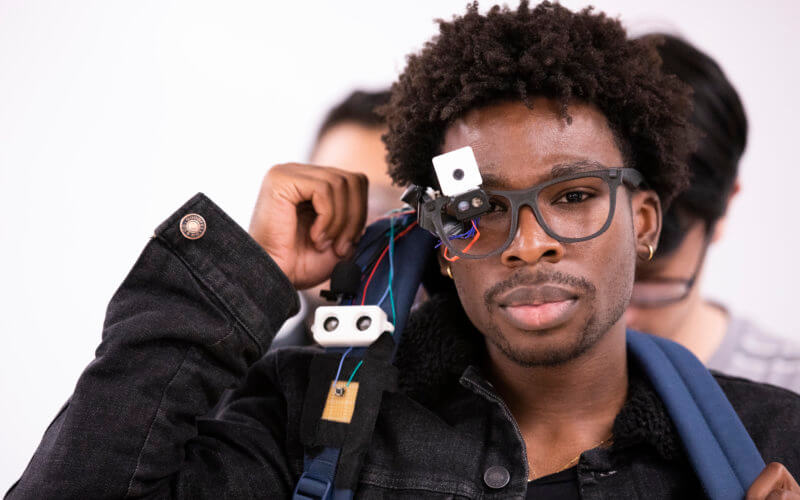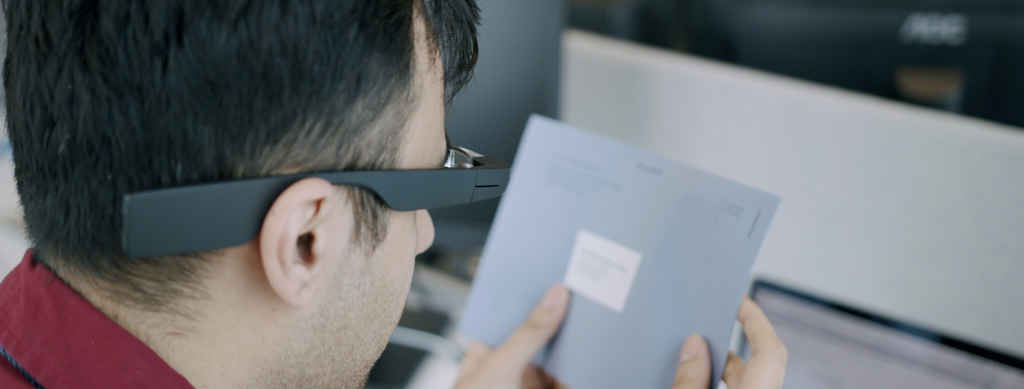Discover Advanced Assistive Tools for Individuals With Visual Problems
The landscape of assistive innovation for individuals with visual disabilities is progressing rapidly, presenting a variety of ingenious tools that enhance autonomy and engagement. From clever glasses that seamlessly merge visual input with acoustic assistance to advanced navigating applications that redefine spatial understanding, these devices are improving opportunities.
Smart Glasses Innovations
Smart glasses stand for a substantial improvement in assistive modern technology for people with visual problems. These innovative devices incorporate numerous attributes developed to boost the customer's interaction with their setting. Outfitted with electronic cameras and sensing units, smart glasses can catch real-time aesthetic information, which is then processed and shared to the customer via audio responses or haptic feelings. This capability enables people to receive prompt descriptions of their environments, improving their ability to involve and browse with the world.
Furthermore, innovations in man-made knowledge have actually better improved the capacities of clever glasses. Maker understanding algorithms can acknowledge faces, read message, and identify things, making them very useful devices for everyday tasks. Individuals can obtain auditory signs that provide context about their atmosphere, promoting independence and confidence.
Additionally, the ergonomic design and light-weight nature of many wise glasses make them appropriate for extended usage, making sure convenience while boosting functionality. As these devices continue to evolve, they hold the prospective to revolutionize the method individuals with aesthetic impairments experience their lives, bridging the void between access and technology. The continuous research study and growth in this area promise to broaden the opportunities for clever glasses, making them a vital element of modern-day assistive devices.
Navigation Apps and Tools
Countless navigation apps and tools have actually become essential resources for individuals with visual disabilities, dramatically improving their ability to traverse unfamiliar atmospheres. These innovations utilize GPS performance, audio signs, and real-time information to offer users with accurate navigating aid.
One prominent instance is the Aira application, which links customers to qualified agents that can give aesthetic descriptions of surroundings and navigation guidance through a real-time video clip feed. This solution enhances the user's spatial recognition and self-confidence while browsing. One more noteworthy tool is Seeing Eye GPS, which offers voice-guided navigating and factors of rate of interest, making it possible for customers to gain access to vital info about their environments.

As technology remains to advance, the growth of more advanced navigating devices promises to additional encourage individuals with visual problems, helping with smooth mobility and combination right into varied environments. Such developments are important in advertising a much more inclusive culture.
Braille Modern Technology Advancements
In recent times, improvements in Braille technology have dramatically changed just how individuals with visual impairments accessibility info and involve with the globe around them. The development of mobile Braille display screens has actually transformed reading by enabling individuals to attach wirelessly to smart devices, tablet computers, and computer systems. These gadgets transform text right into eye institute Braille in real-time, allowing seamless communication with digital content.
Additionally, ingenious Braille printers have arised, improving the manufacturing of tactile products. Modern embossers are quicker and much more efficient, enabling the rapid production of Braille papers and educational materials. This effectiveness minimizes the moment and expense related to creating Braille resources, making them more available to organizations and institutions.
Furthermore, the assimilation of Braille with various other innovations, such as expert system and artificial intelligence, has actually opened up new opportunities for tailored learning experiences. Voice acknowledgment and synthesis innovations can match Braille, supplying an inclusive approach to information circulation.
As the demand for comprehensive education and learning and office atmospheres grows, these technical improvements play a crucial function in empowering people with aesthetic impairments, guaranteeing they have equal access to information and chances in various aspects of life.
Wearable Devices for Freedom
An expanding variety of wearable devices is boosting freedom for people with aesthetic problems, supplying cutting-edge options that enhance navigating and daily living. Braille displays and notetakers. These devices make use of innovative innovations to provide real-time feedback and assistance, promoting freedom in different environments

Wearable modern technology also consists of smartwatches that can be programmed with accessibility features, allowing individuals to get notices, track their locations, or perhaps require assistance with the touch of a switch. Some devices integrate man-made knowledge to examine the atmosphere, offering audio descriptions of neighboring objects or people.
Voice-Activated Assistive Solutions
Leveraging voice-activated assistive remedies has changed the landscape of support for individuals with aesthetic problems, giving hands-free communication and access to a range of jobs. These innovations use all-natural language processing and man-made intelligence to enable individuals to execute daily activities via basic voice commands.

Furthermore, recent developments in voice recognition precision have enhanced the customer experience substantially, fitting varied accents and speech patterns. This inclusivity ensures that more individuals can profit from these technologies, promoting a better feeling of autonomy.
Final Thought
In final thought, the growth of advanced assistive tools considerably improves the freedom and affordable eye exam lifestyle for people with aesthetic problems. Technologies such as wise glasses, navigating applications, Braille technology, wearable devices, and voice-activated options collectively foster an even more comprehensive setting. These modern technologies empower users to navigate their environments with self-confidence and engage more totally with the world, eventually promoting higher accessibility and equivalent possibilities for individuals encountering aesthetic challenges.
The landscape of assistive modern technology for people with aesthetic impairments is developing rapidly, presenting a variety of innovative gadgets that improve autonomy and interaction.Smart glasses stand for a significant improvement in assistive technology for individuals with visual impairments. As these gadgets proceed to develop, they hold the possible to change the method individuals with aesthetic problems experience their daily lives, bridging the gap between accessibility and innovation.In current years, innovations in Braille technology have considerably changed exactly how people with visual problems gain access to details and engage with the world around them. These innovations encourage customers to navigate their environments with confidence and involve even more fully with the world, eventually promoting higher accessibility and equal possibilities for people encountering aesthetic obstacles.